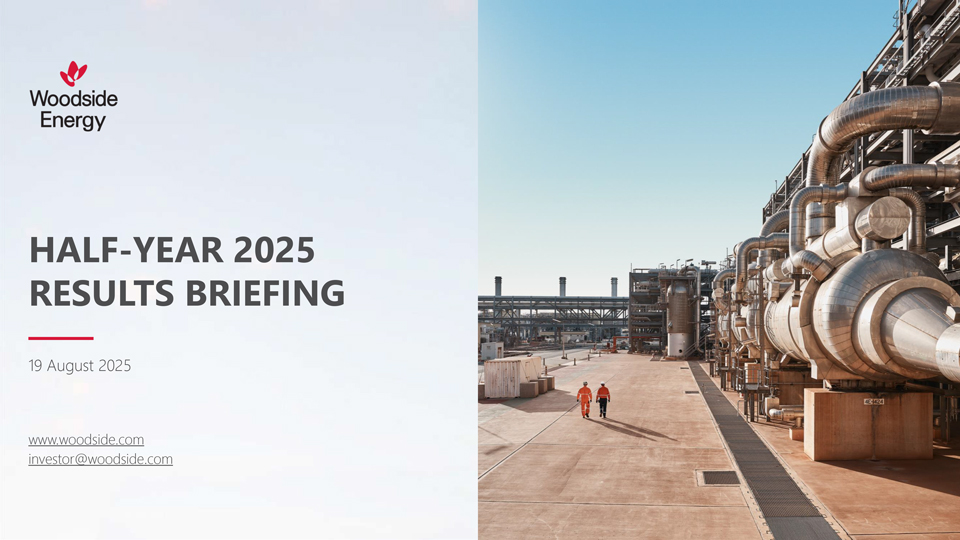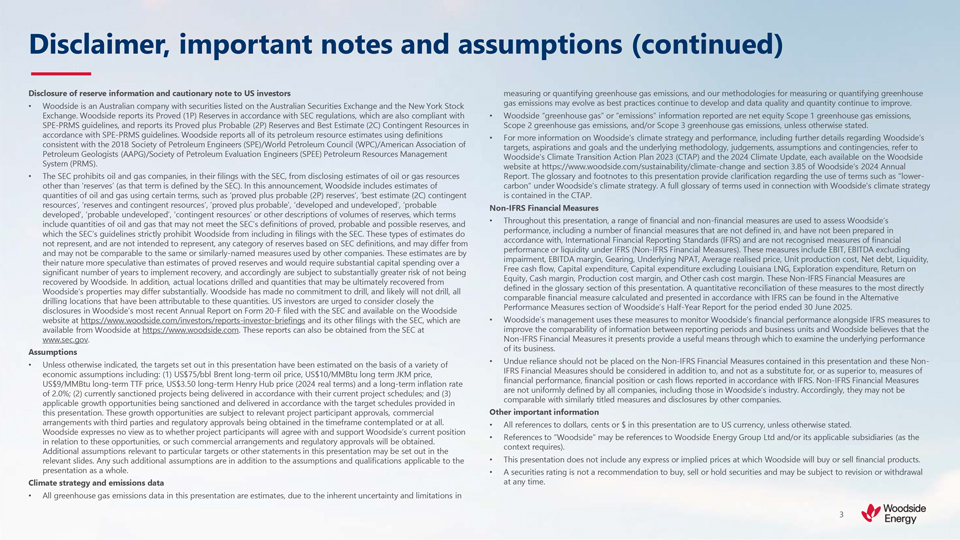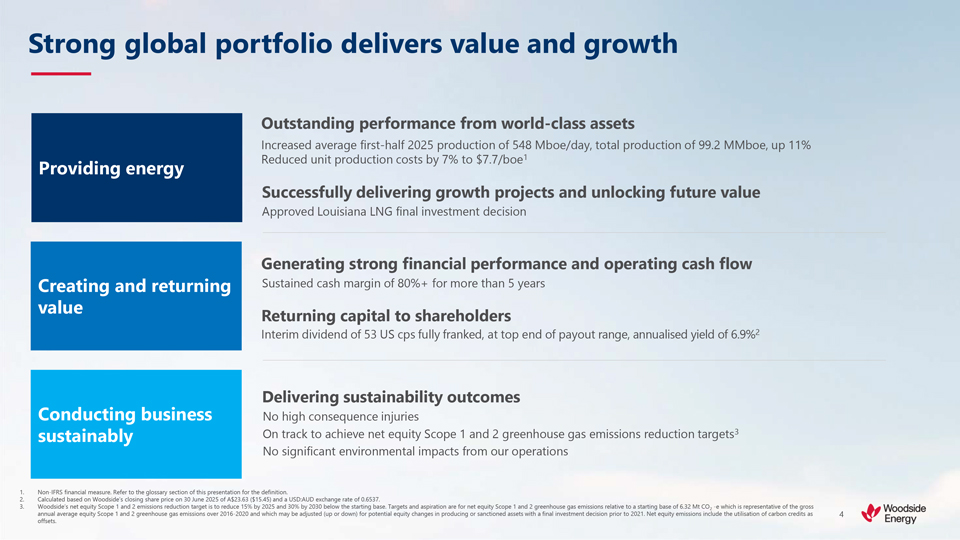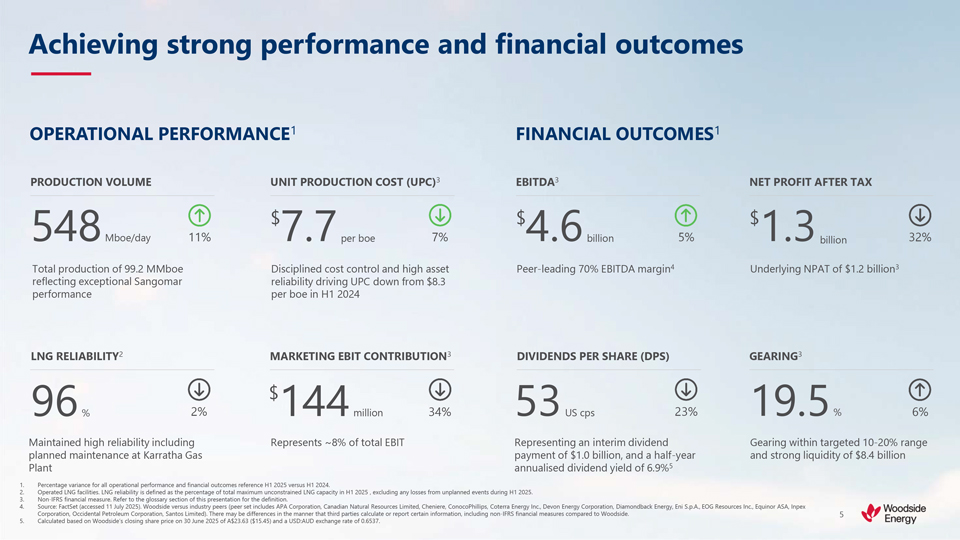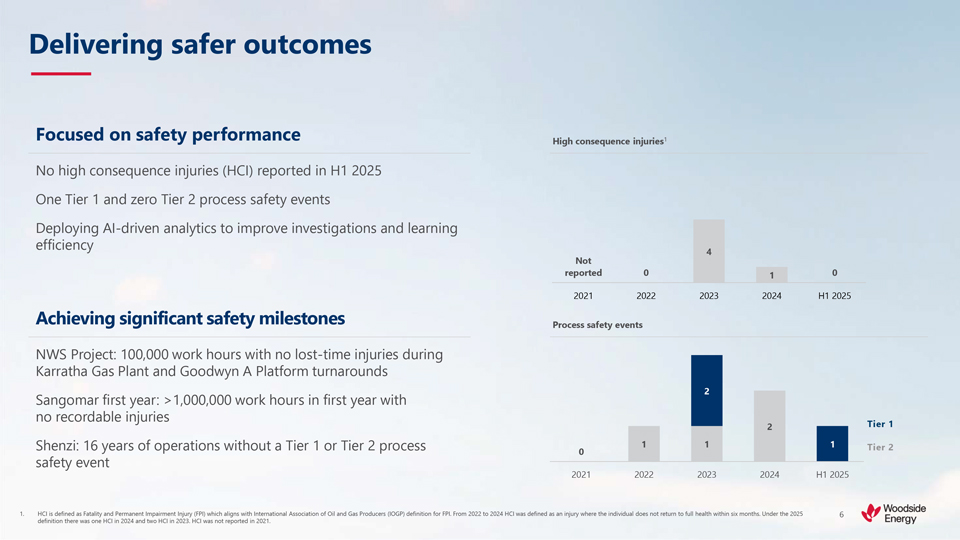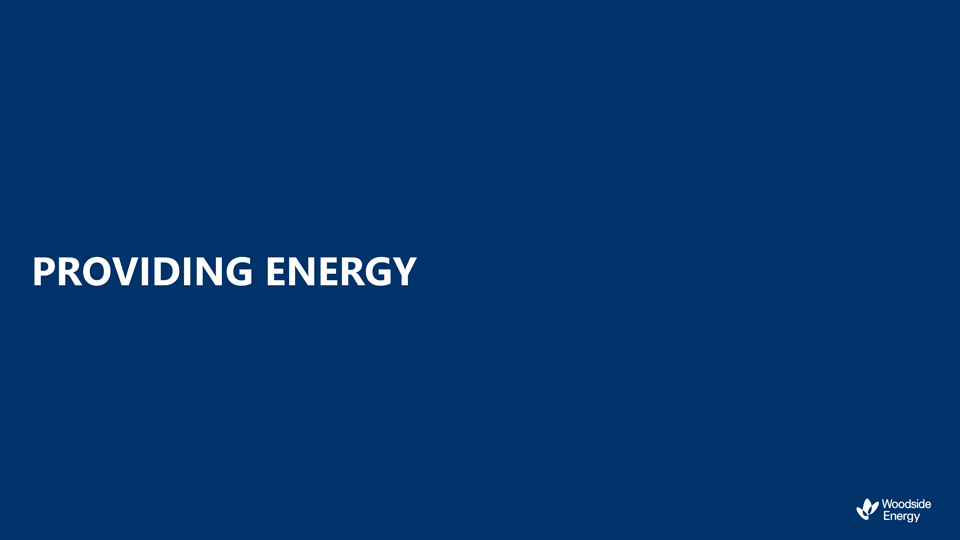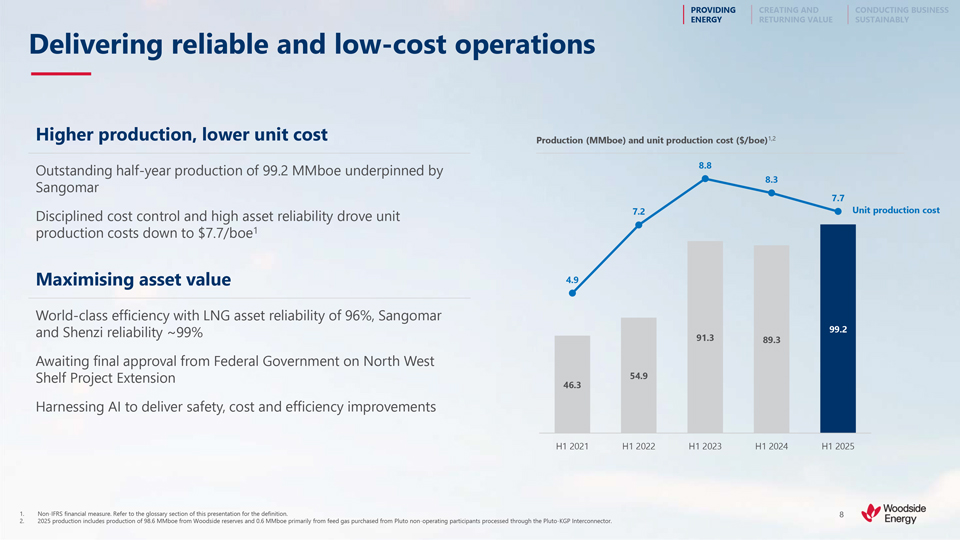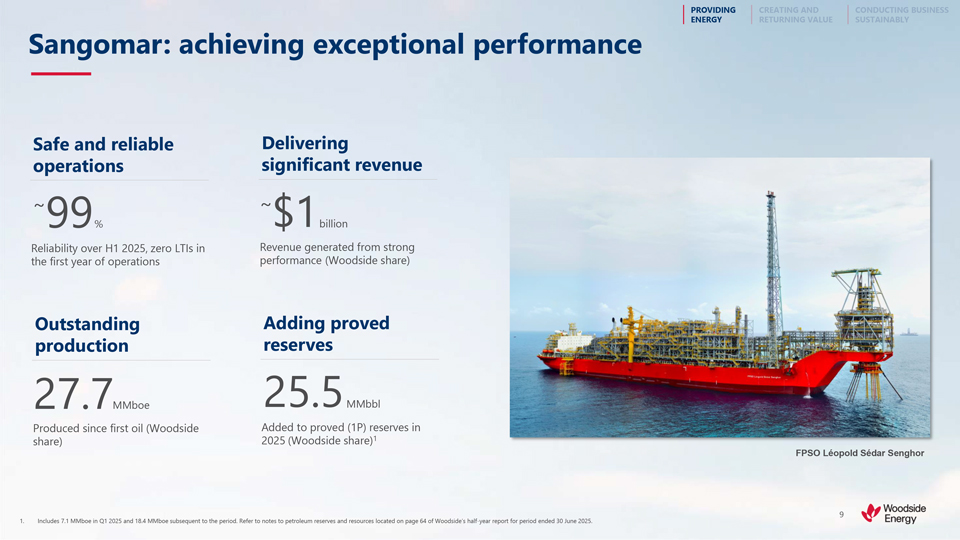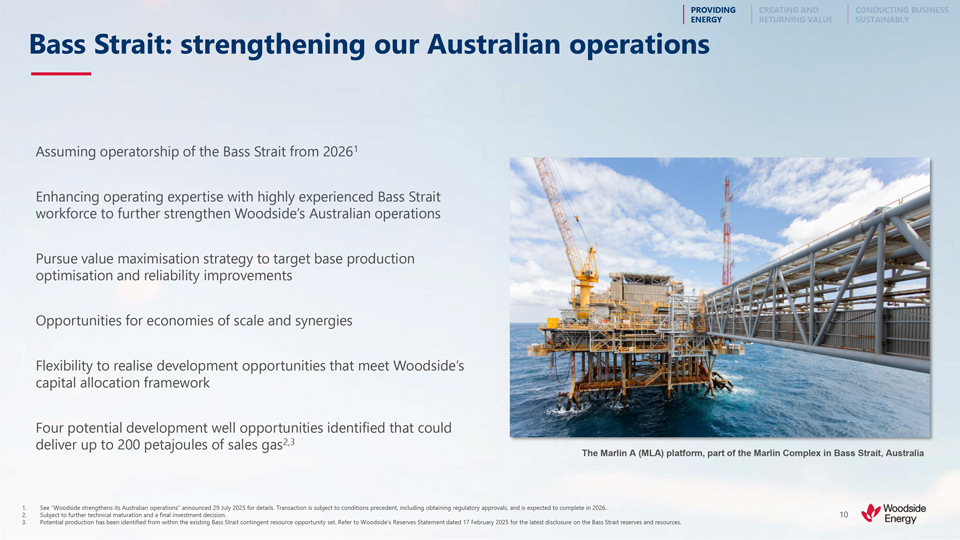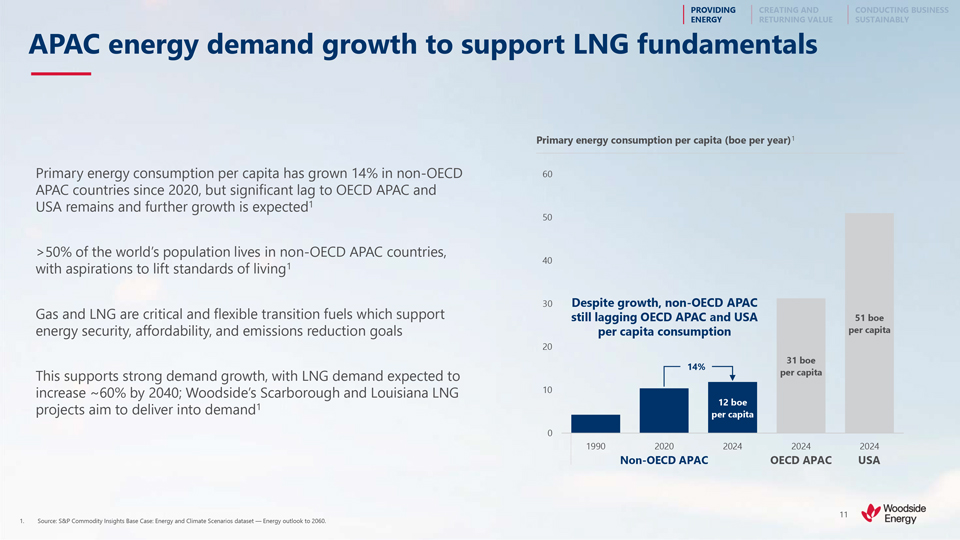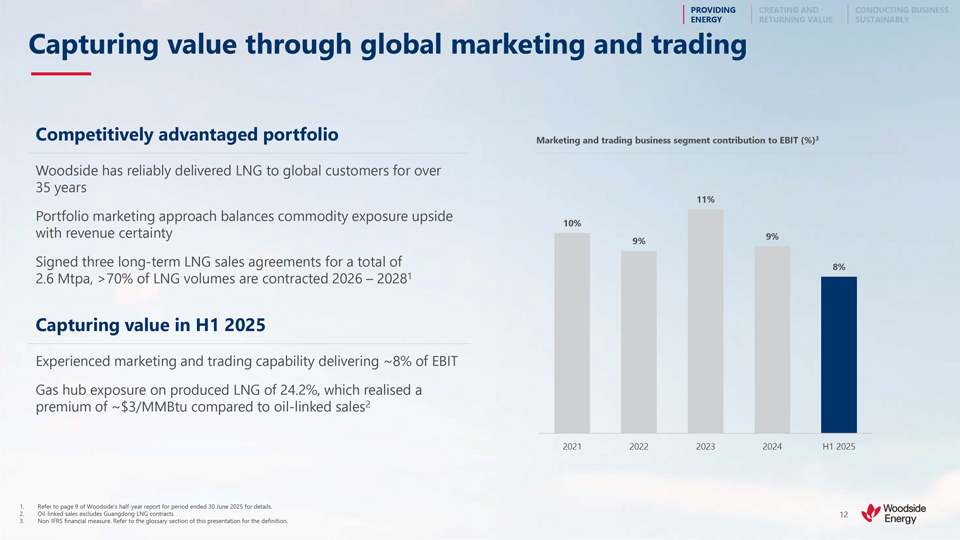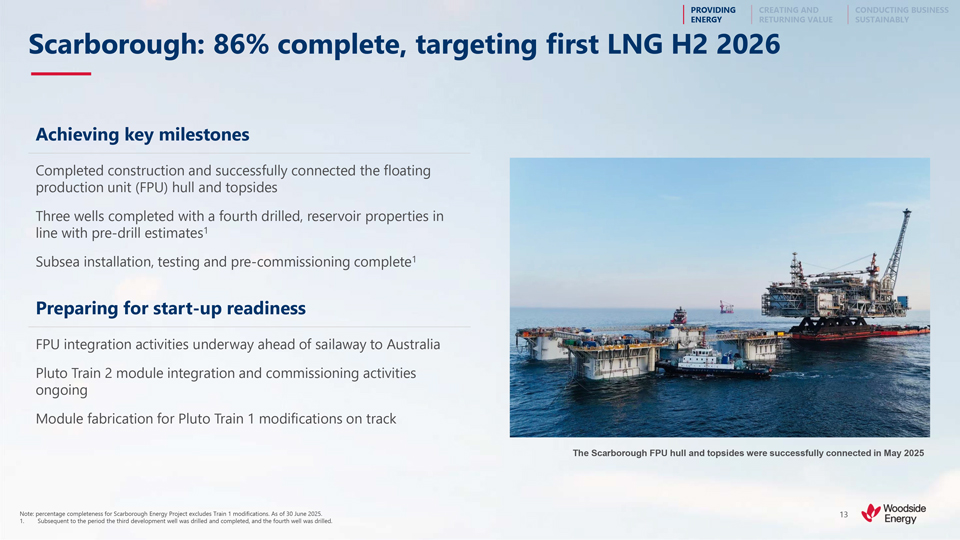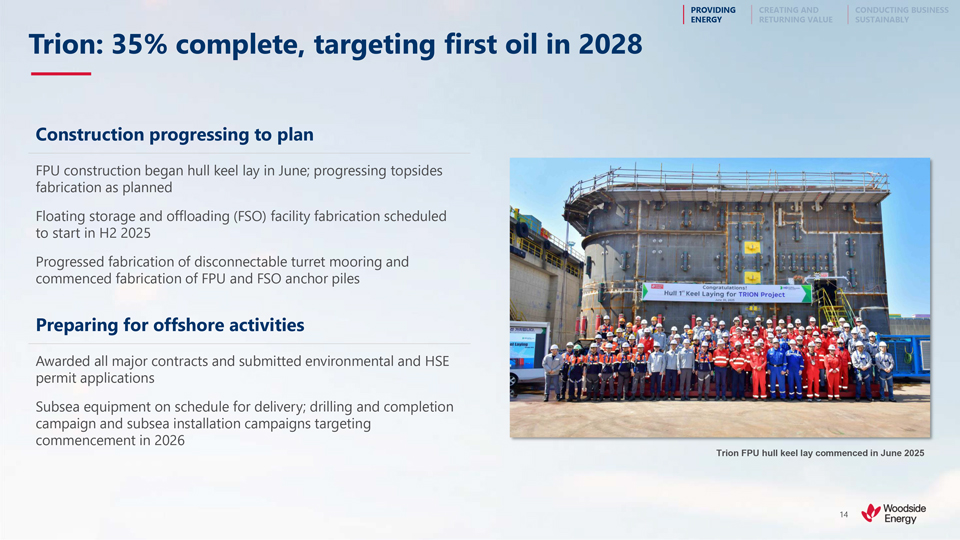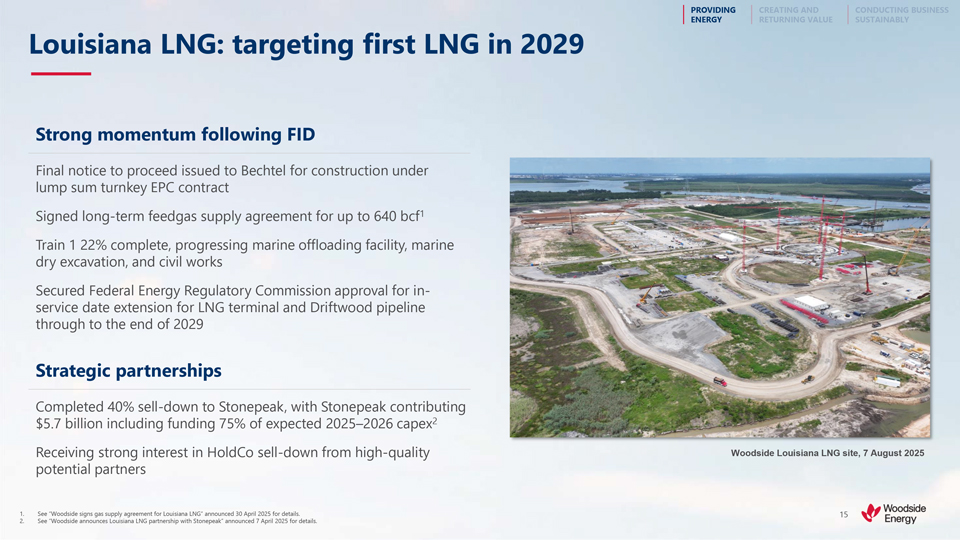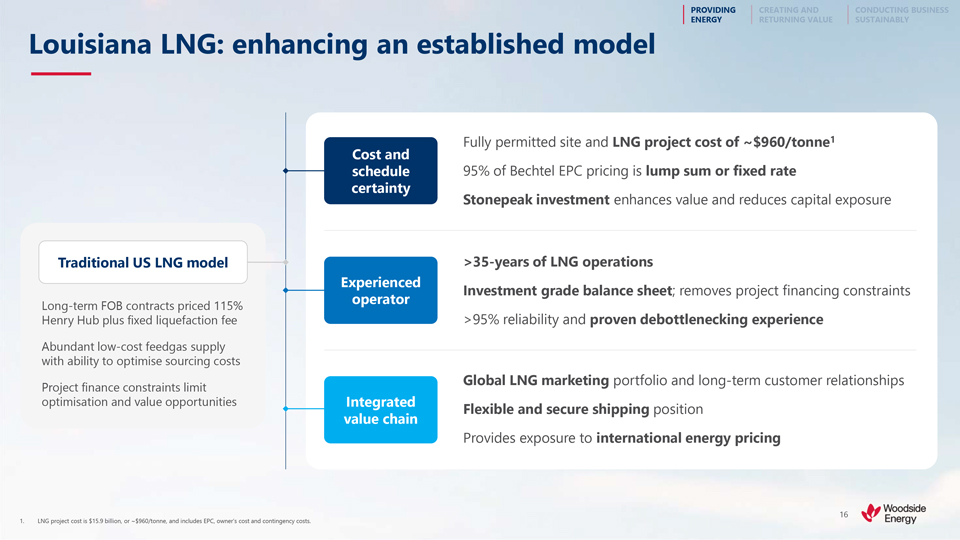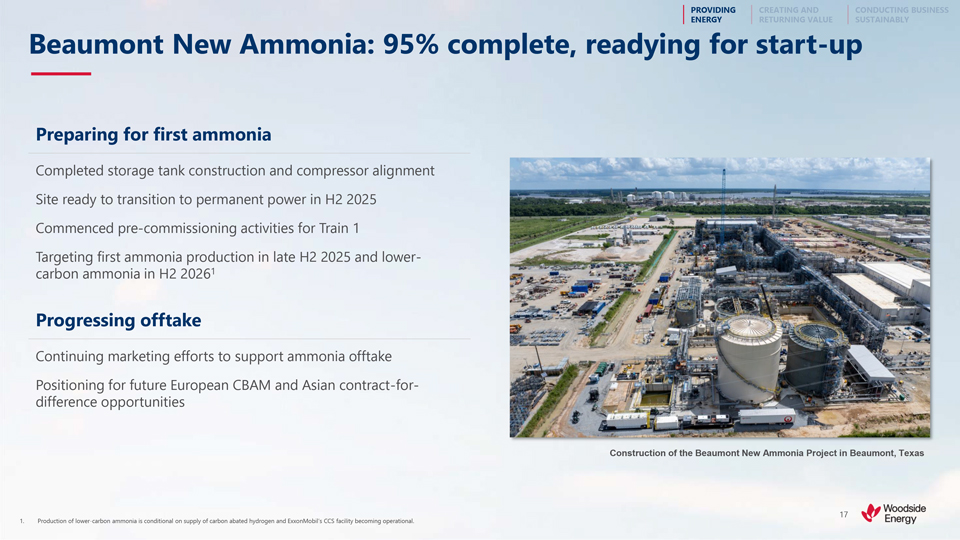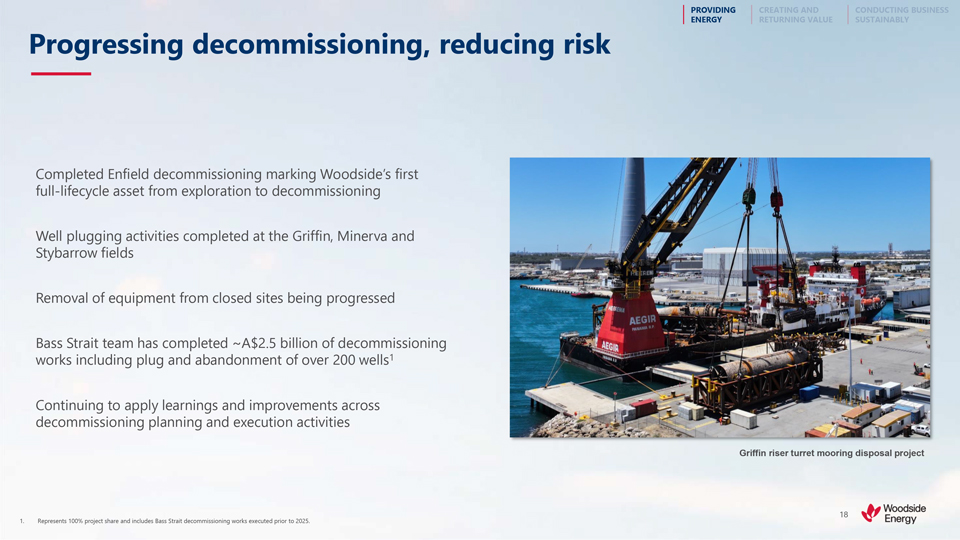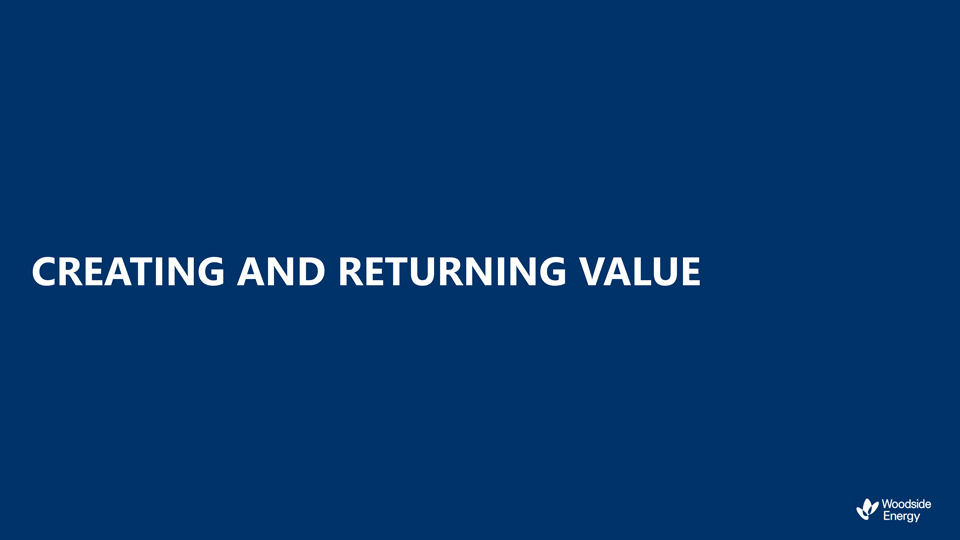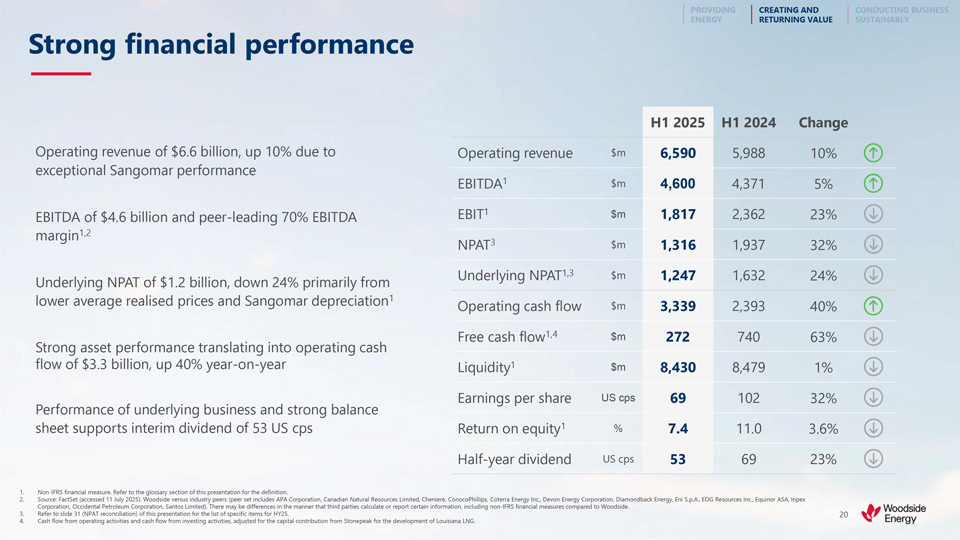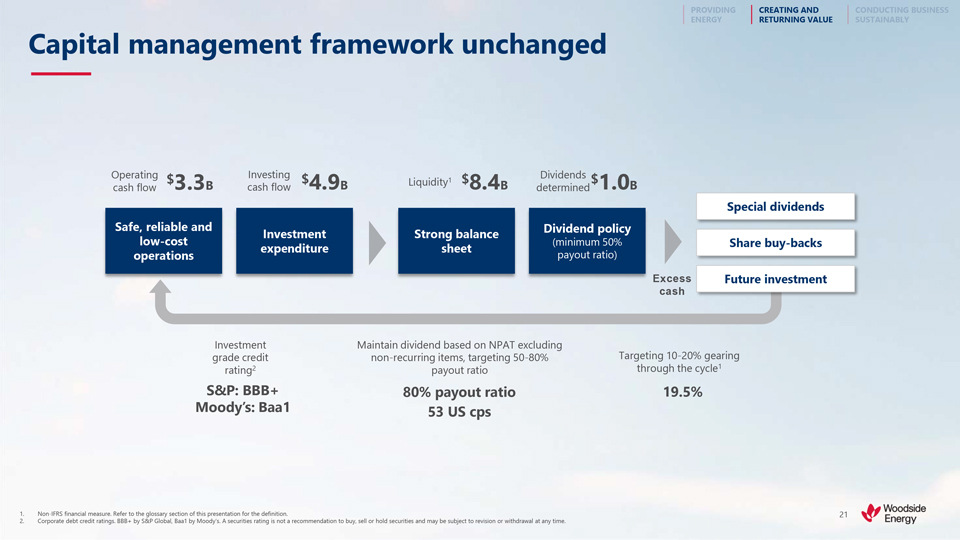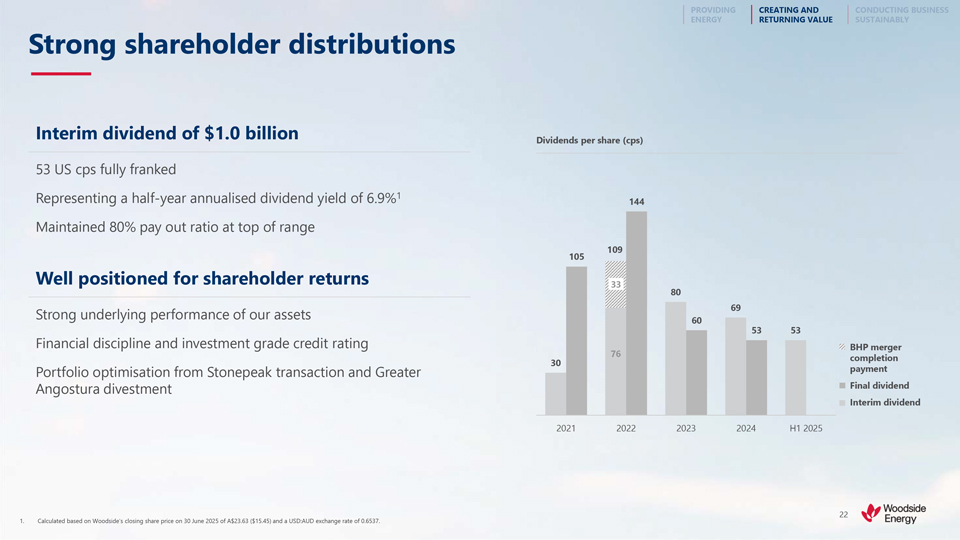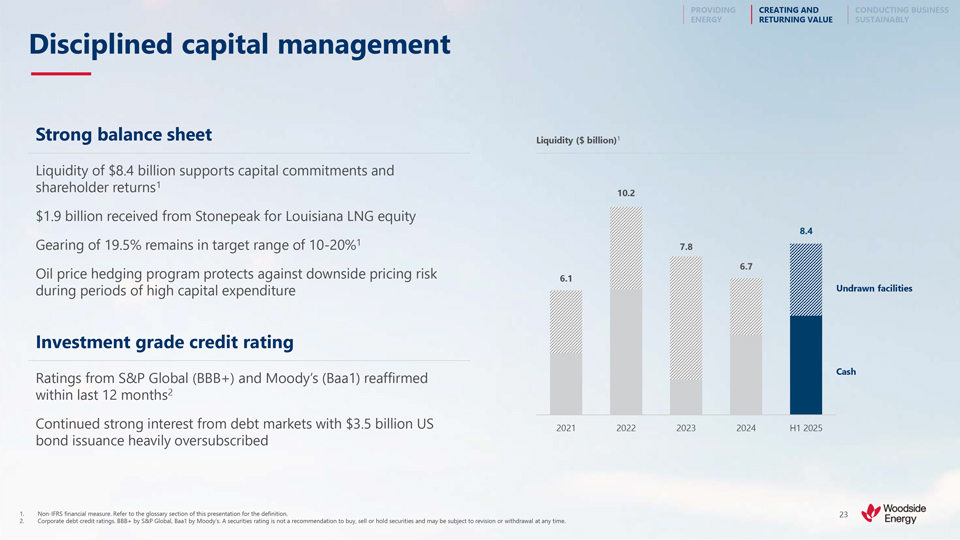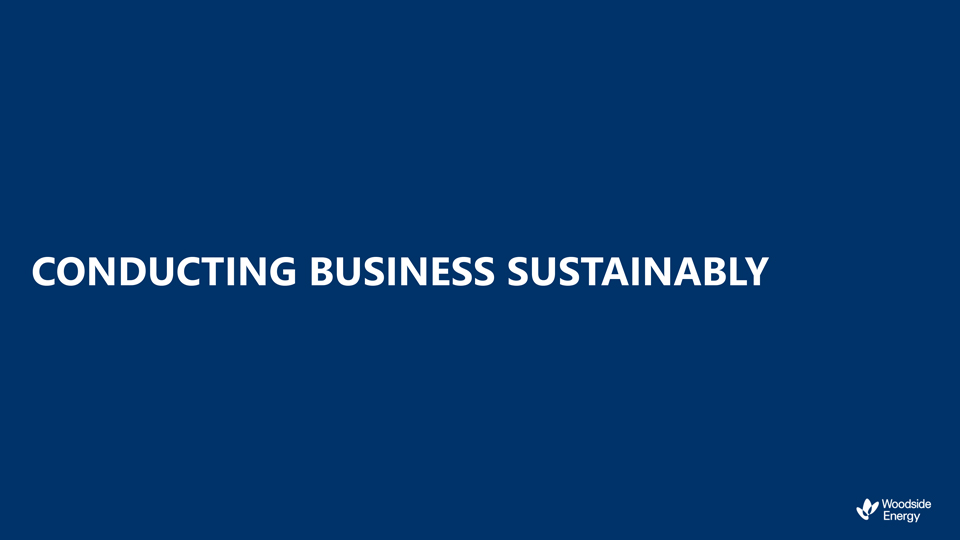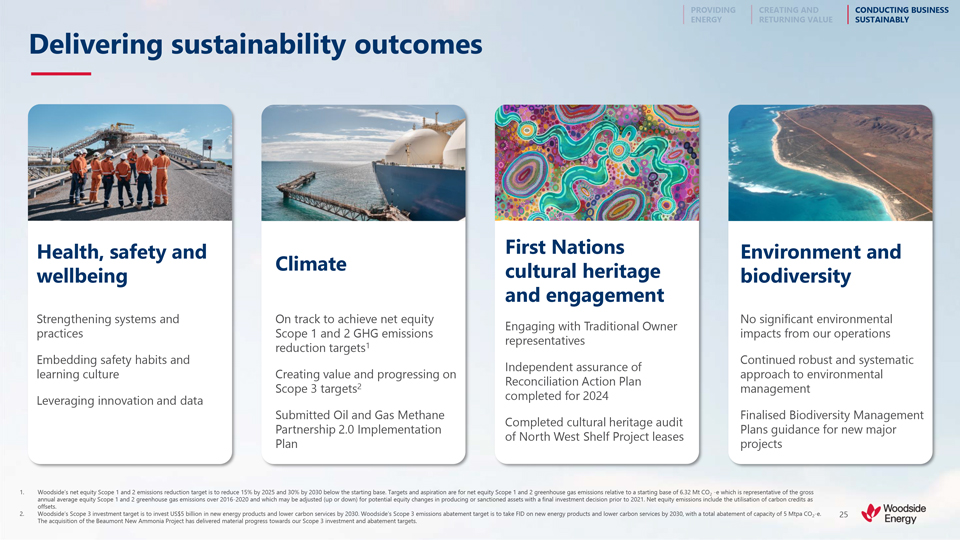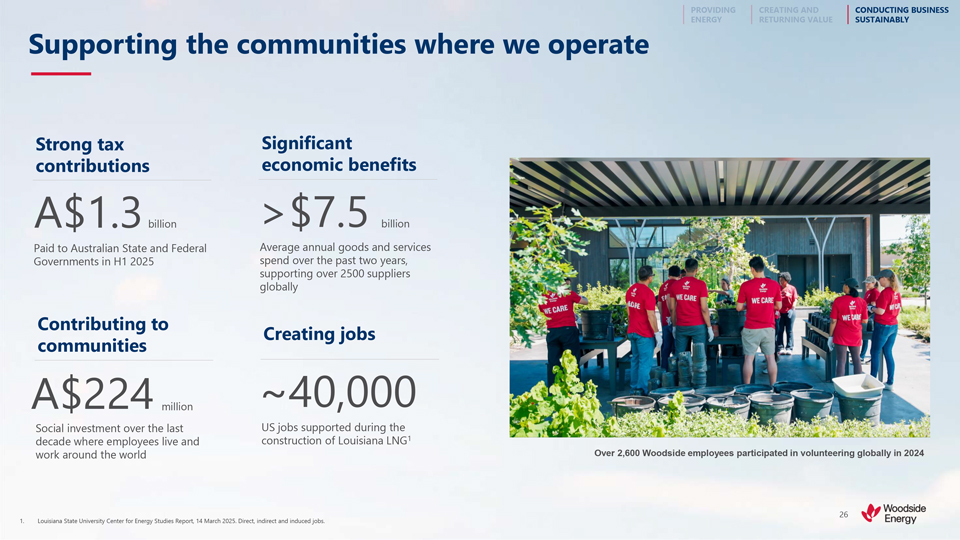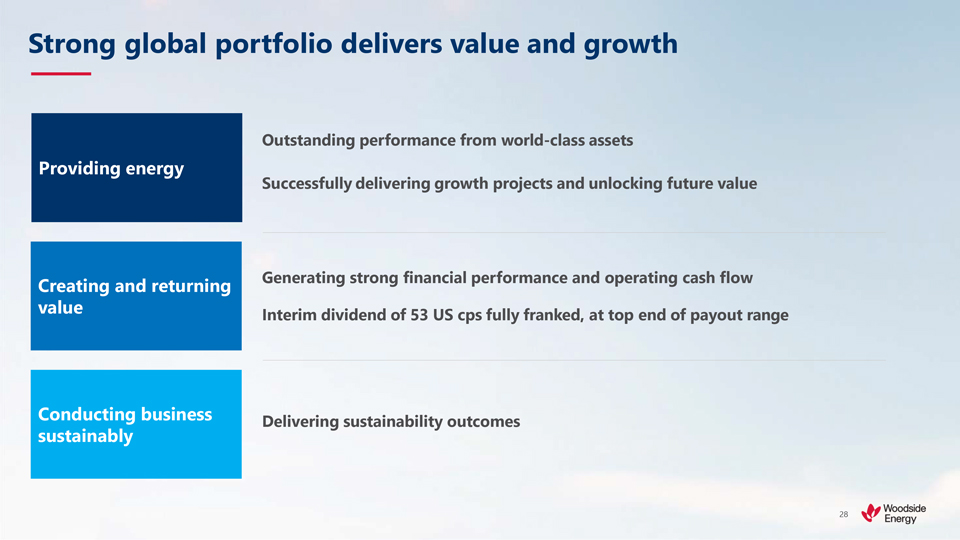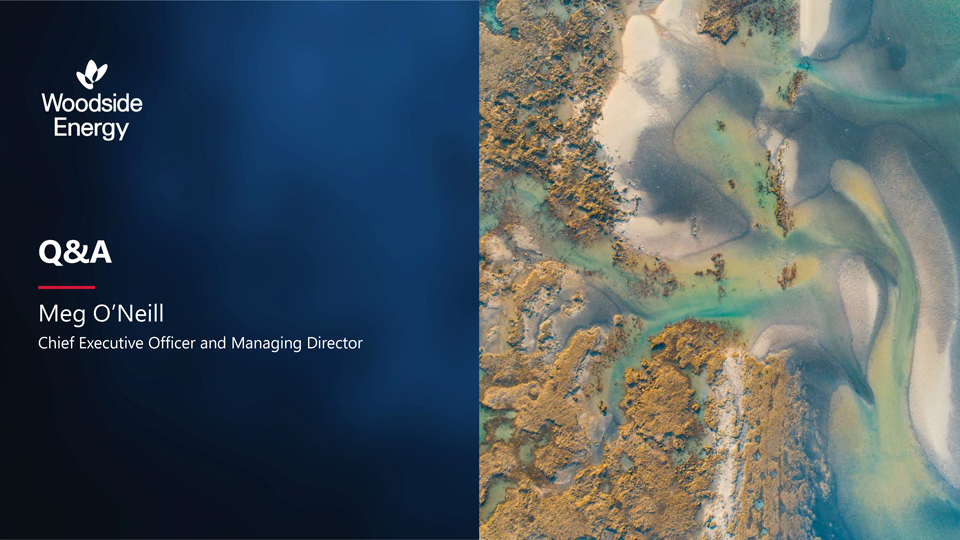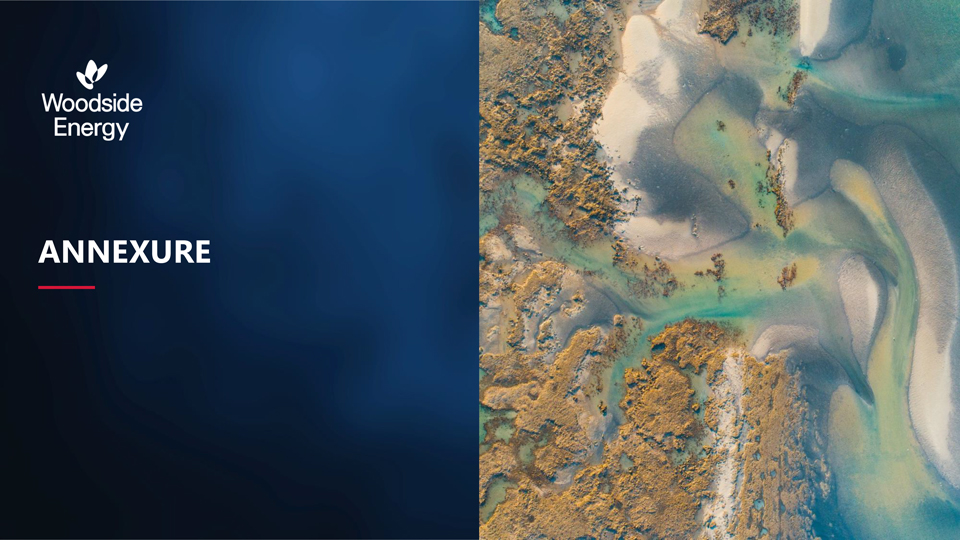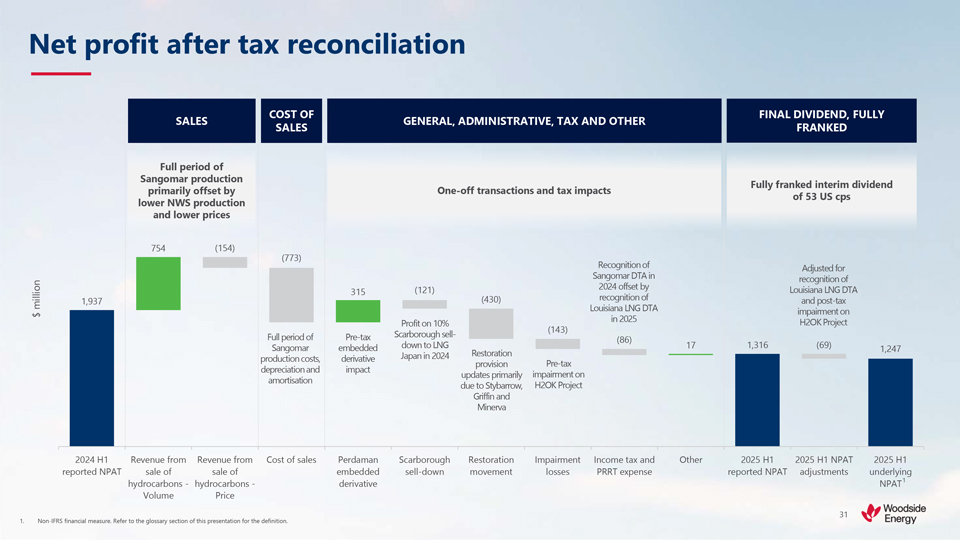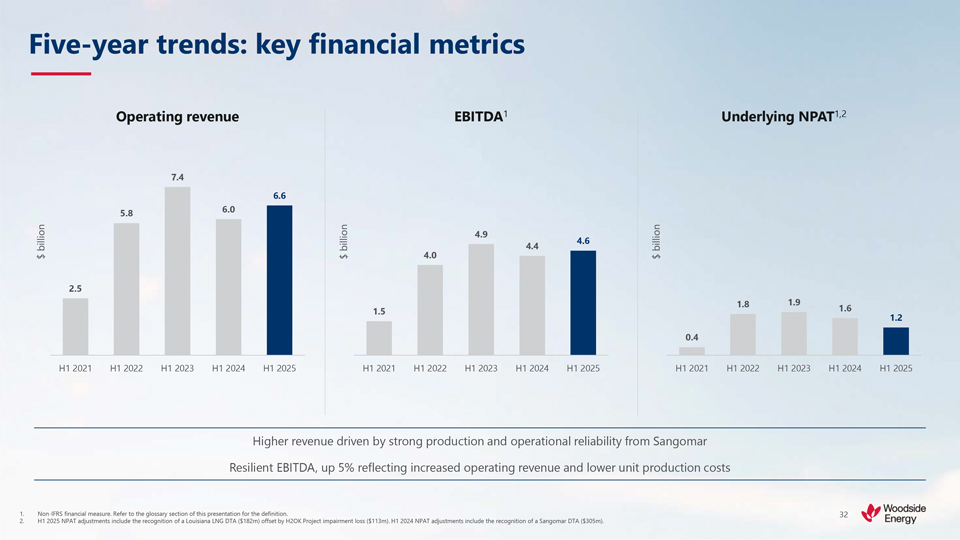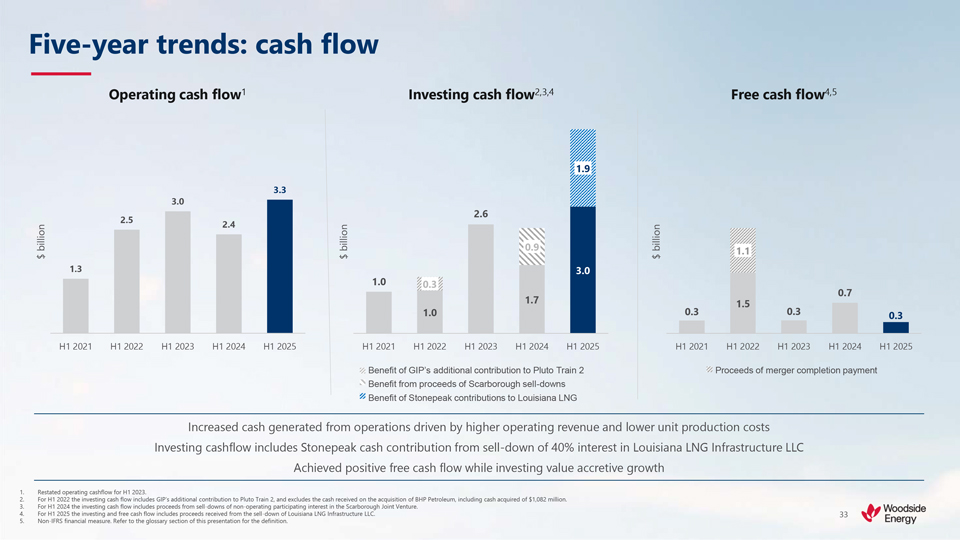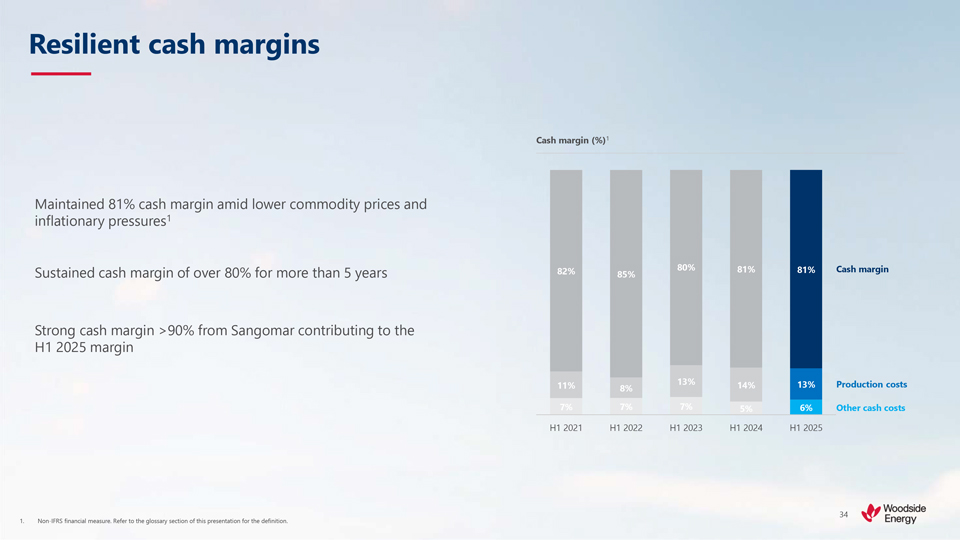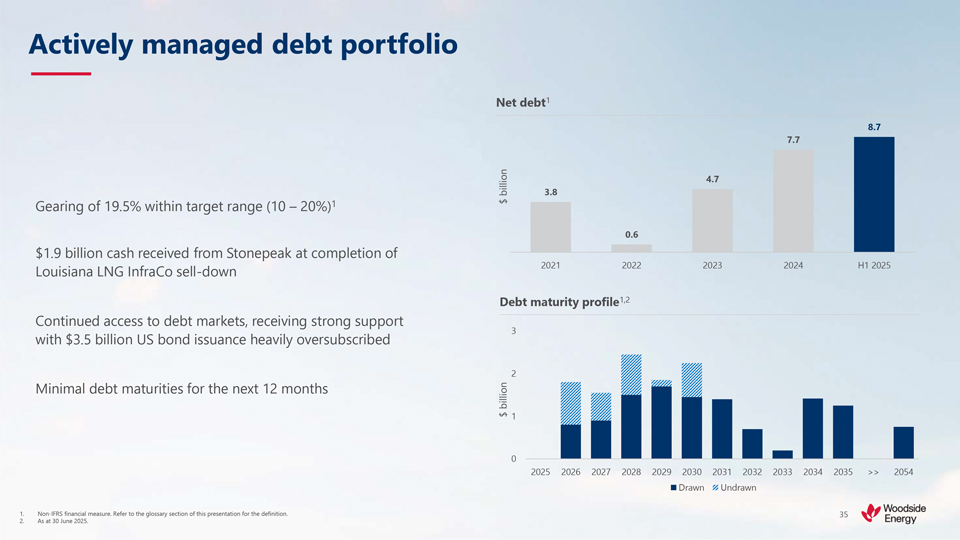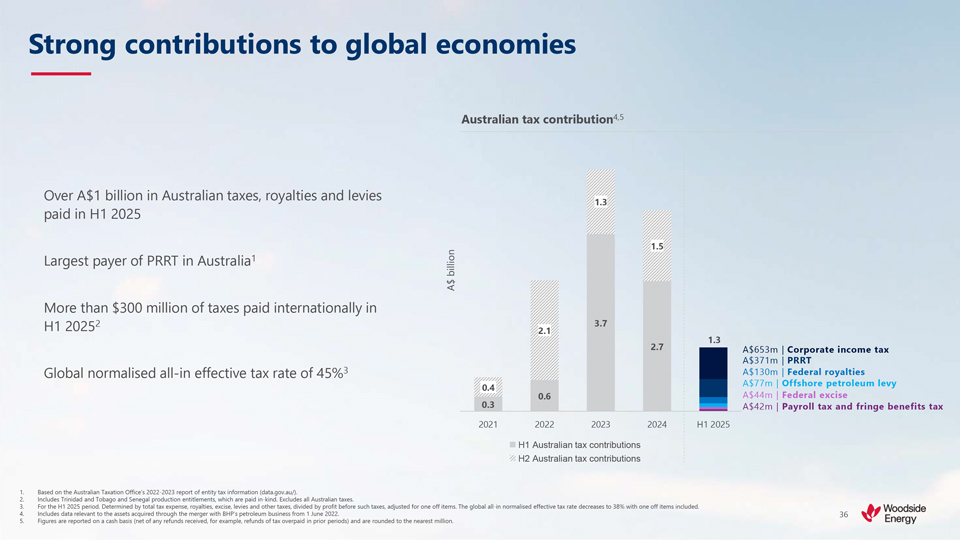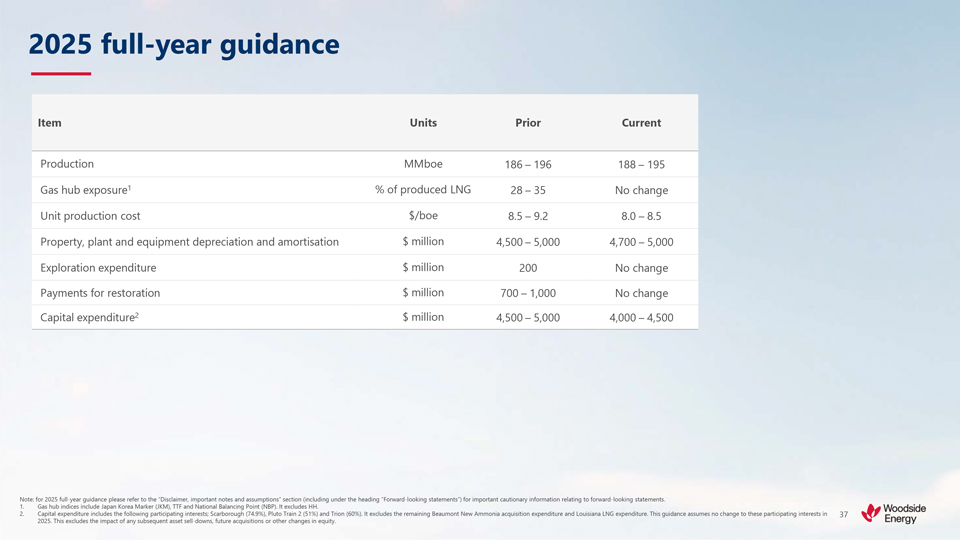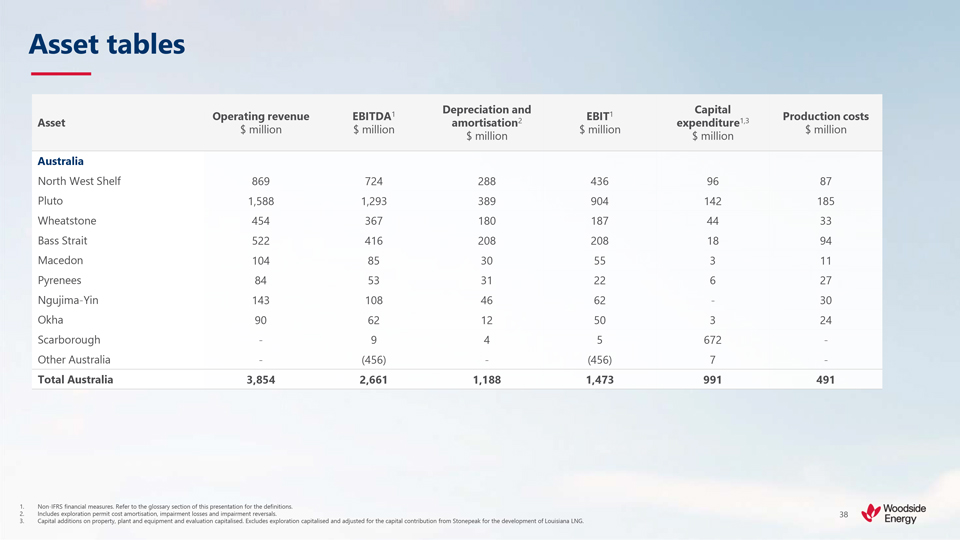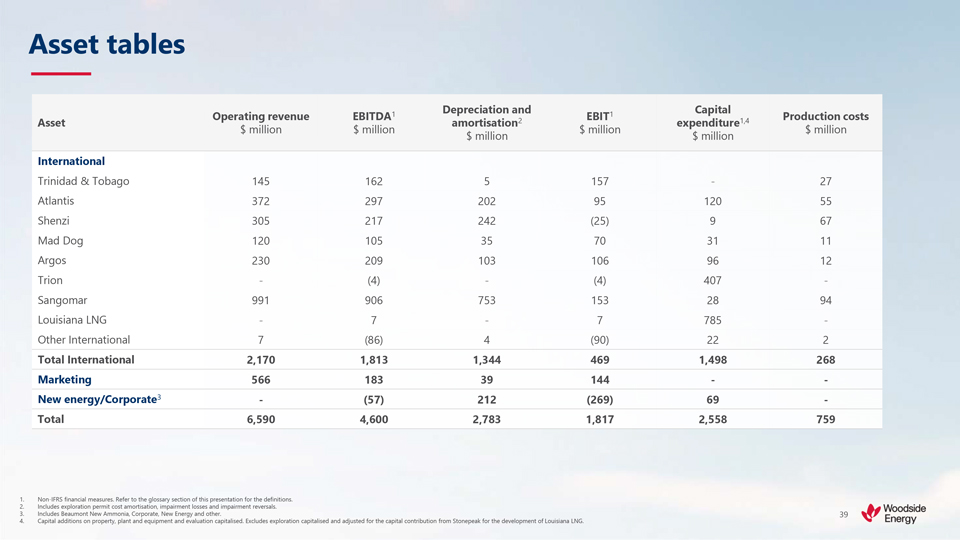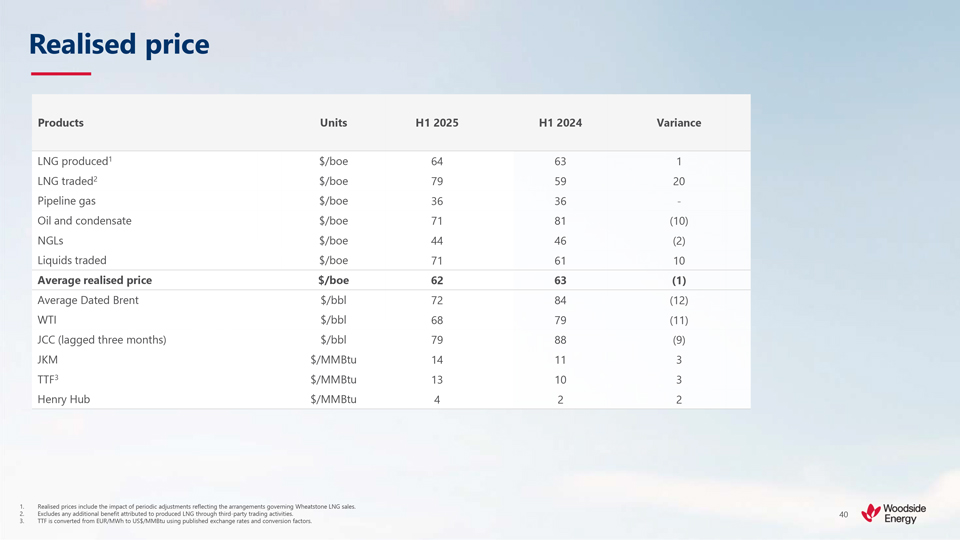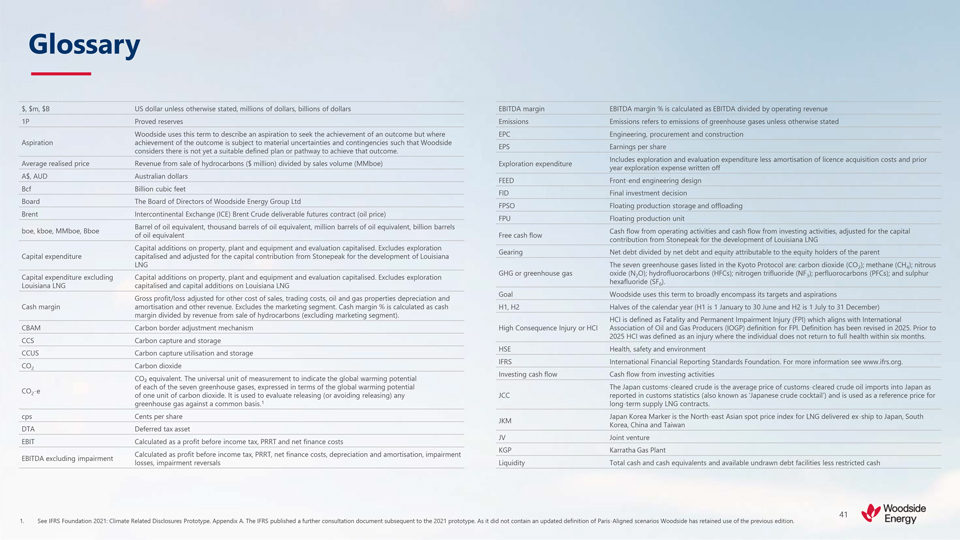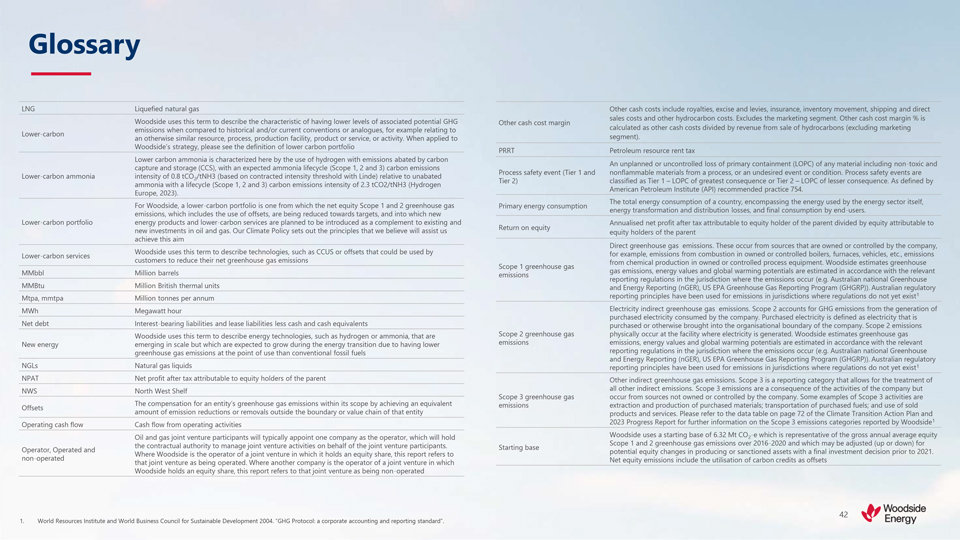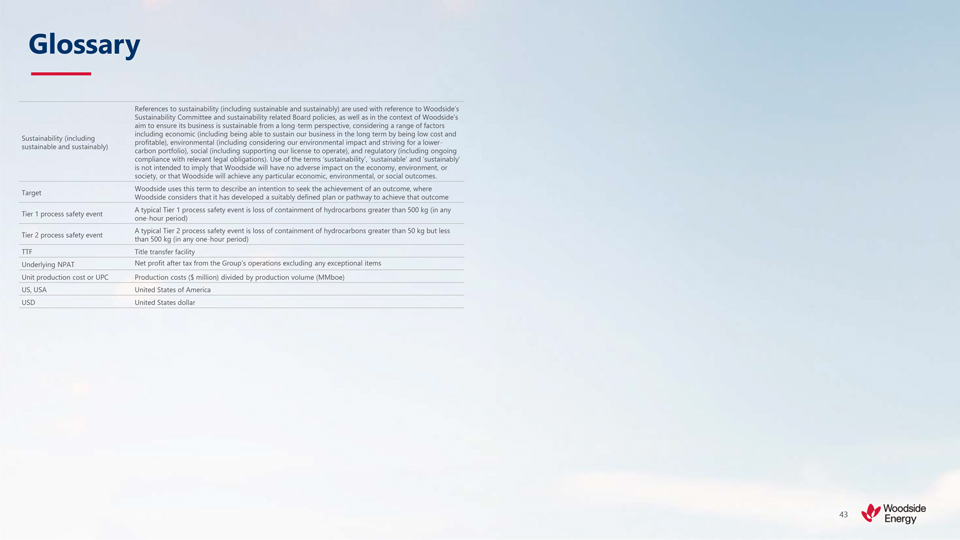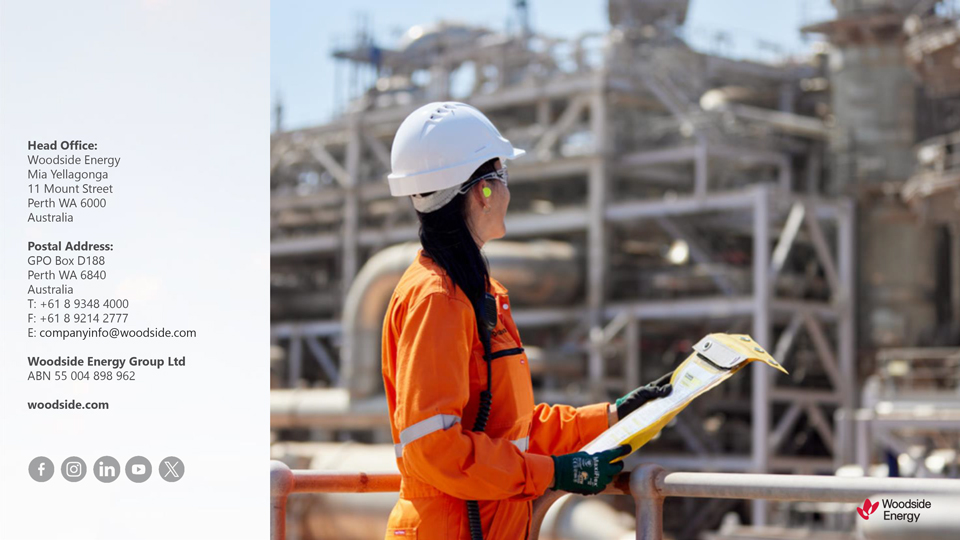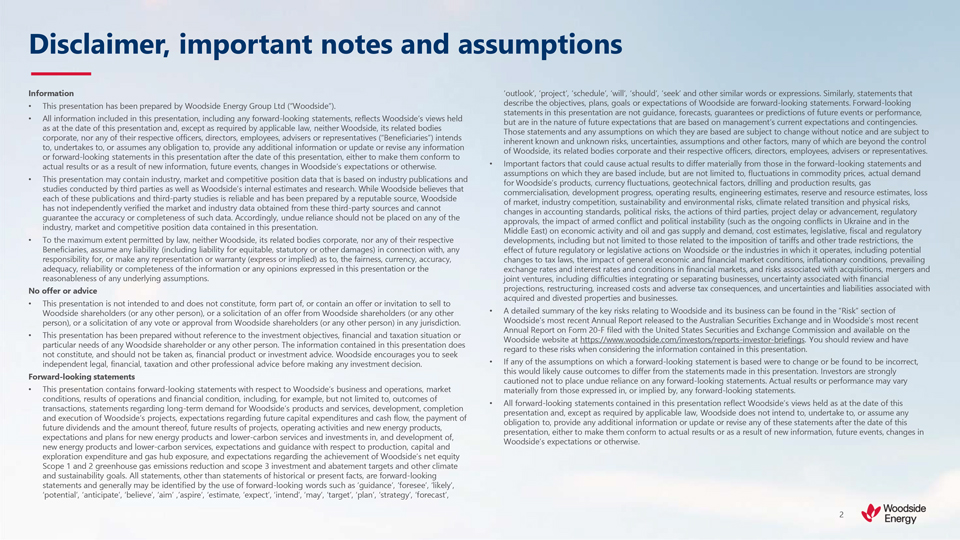
Disclaimer, important notes and assumptions Information • This presentation has been prepared by Woodside
Energy Group Ltd (“Woodside”). • All information included in this presentation, including any forward-looking statements, reflects Woodside’s views held as at the date of this presentation and, except as required by applicable
law, neither Woodside, its related bodies corporate, nor any of their respective officers, directors, employees, advisers or representatives (“Beneficiaries”) intends to, undertakes to, or assumes any obligation to, provide any
additional information or update or revise any information or forward-looking statements in this presentation after the date of this presentation, either to make them conform to actual results or as a result of new information, future events,
changes in Woodside’s expectations or otherwise. • This presentation may contain industry, market and competitive position data that is based on industry publications and studies conducted by third parties as well as Woodside’s
internal estimates and research. While Woodside believes that each of these publications and third-party studies is reliable and has been prepared by a reputable source, Woodside has not independently verified the market and industry data obtained
from these third-party sources and cannot guarantee the accuracy or completeness of such data. Accordingly, undue reliance should not be placed on any of the industry, market and competitive position data contained in this presentation. • To
the maximum extent permitted by law, neither Woodside, its related bodies corporate, nor any of their respective Beneficiaries, assume any liability (including liability for equitable, statutory or other damages) in connection with, any
responsibility for, or make any representation or warranty (express or implied) as to, the fairness, currency, accuracy, adequacy, reliability or completeness of the information or any opinions expressed in this presentation or the reasonableness of
any underlying assumptions. No offer or advice • This presentation is not intended to and does not constitute, form part of, or contain an offer or invitation to sell to Woodside shareholders (or any other person), or a solicitation of an offer
from Woodside shareholders (or any other person), or a solicitation of any vote or approval from Woodside shareholders (or any other person) in any jurisdiction. • This presentation has been prepared without reference to the investment
objectives, financial and taxation situation or particular needs of any Woodside shareholder or any other person. The information contained in this presentation does not constitute, and should not be taken as, financial product or investment advice.
Woodside encourages you to seek independent legal, financial, taxation and other professional advice before making any investment decision. Forward-looking statements • This presentation contains forward-looking statements with respect to
Woodside’s business and operations, market conditions, results of operations and financial condition, including, for example, but not limited to, outcomes of transactions, statements regarding long-term demand for Woodside’s products and
services, development, completion and execution of Woodside’s projects, expectations regarding future capital expenditures and cash flow, the payment of future dividends and the amount thereof, future results of projects, operating activities
and new energy products, expectations and plans for new energy products and lower-carbon services and investments in, and development of, new energy products and lower-carbon services, expectations and guidance with respect to production, capital
and exploration expenditure and gas hub exposure, and expectations regarding the achievement of Woodside’s net equity Scope 1 and 2 greenhouse gas emissions reduction and scope 3 investment and abatement targets and other climate and
sustainability goals. All statements, other than statements of historical or present facts, are forward-looking statements and generally may be identified by the use of forward-looking words such as ‘guidance’, ‘foresee’,
‘likely’, ‘potential’, ‘anticipate’, ‘believe’, ‘aim’ ,’aspire’, ‘estimate, ‘expect’, ‘intend’, ‘may’, ‘target’,
‘plan’, ‘strategy’, ‘forecast’, ‘outlook’, ‘project’, ‘schedule’, ‘will’, ‘should’, ‘seek’ and other similar words or expressions. Similarly,
statements that describe the objectives, plans, goals or expectations of Woodside are forward-looking statements. Forward-looking statements in this presentation are not guidance, forecasts, guarantees or predictions of future events or performance,
but are in the nature of future expectations that are based on management’s current expectations and contingencies. Those statements and any assumptions on which they are based are subject to change without notice and are subject to inherent
known and unknown risks, uncertainties, assumptions and other factors, many of which are beyond the control of Woodside, its related bodies corporate and their respective officers, directors, employees, advisers or representatives. • Important
factors that could cause actual results to differ materially from those in the forward-looking statements and assumptions on which they are based include, but are not limited to, fluctuations in commodity prices, actual demand for Woodside’s
products, currency fluctuations, geotechnical factors, drilling and production results, gas commercialisation, development progress, operating results, engineering estimates, reserve and resource estimates, loss of market, industry competition,
sustainability and environmental risks, climate related transition and physical risks, changes in accounting standards, political risks, the actions of third parties, project delay or advancement, regulatory approvals, the impact of armed conflict
and political instability (such as the ongoing conflicts in Ukraine and in the Middle East) on economic activity and oil and gas supply and demand, cost estimates, legislative, fiscal and regulatory developments, including but not limited to those
related to the imposition of tariffs and other trade restrictions, the effect of future regulatory or legislative actions on Woodside or the industries in which it operates, including potential changes to tax laws, the impact of general economic and
financial market conditions, inflationary conditions, prevailing exchange rates and interest rates and conditions in financial markets, and risks associated with acquisitions, mergers and joint ventures, including difficulties integrating or
separating businesses, uncertainty associated with financial projections, restructuring, increased costs and adverse tax consequences, and uncertainties and liabilities associated with acquired and divested properties and businesses. • A
detailed summary of the key risks relating to Woodside and its business can be found in the “Risk” section of Woodside’s most recent Annual Report released to the Australian Securities Exchange and in Woodside’s most recent
Annual Report on Form 20-F filed with the United States Securities and Exchange Commission and available on the Woodside website at https://www.woodside.com/investors/reports-investor-briefings. You should
review and have regard to these risks when considering the information contained in this presentation. • If any of the assumptions on which a forward-looking statement is based were to change or be found to be incorrect, this would likely cause
outcomes to differ from the statements made in this presentation. Investors are strongly cautioned not to place undue reliance on any forward-looking statements. Actual results or performance may vary materially from those expressed in, or implied
by, any forward-looking statements. • All forward-looking statements contained in this presentation reflect Woodside’s views held as at the date of this presentation and, except as required by applicable law, Woodside does not intend to,
undertake to, or assume any obligation to, provide any additional information or update or revise any of these statements after the date of this presentation, either to make them conform to actual results or as a result of new information, future
events, changes in Woodside’s expectations or otherwise.

